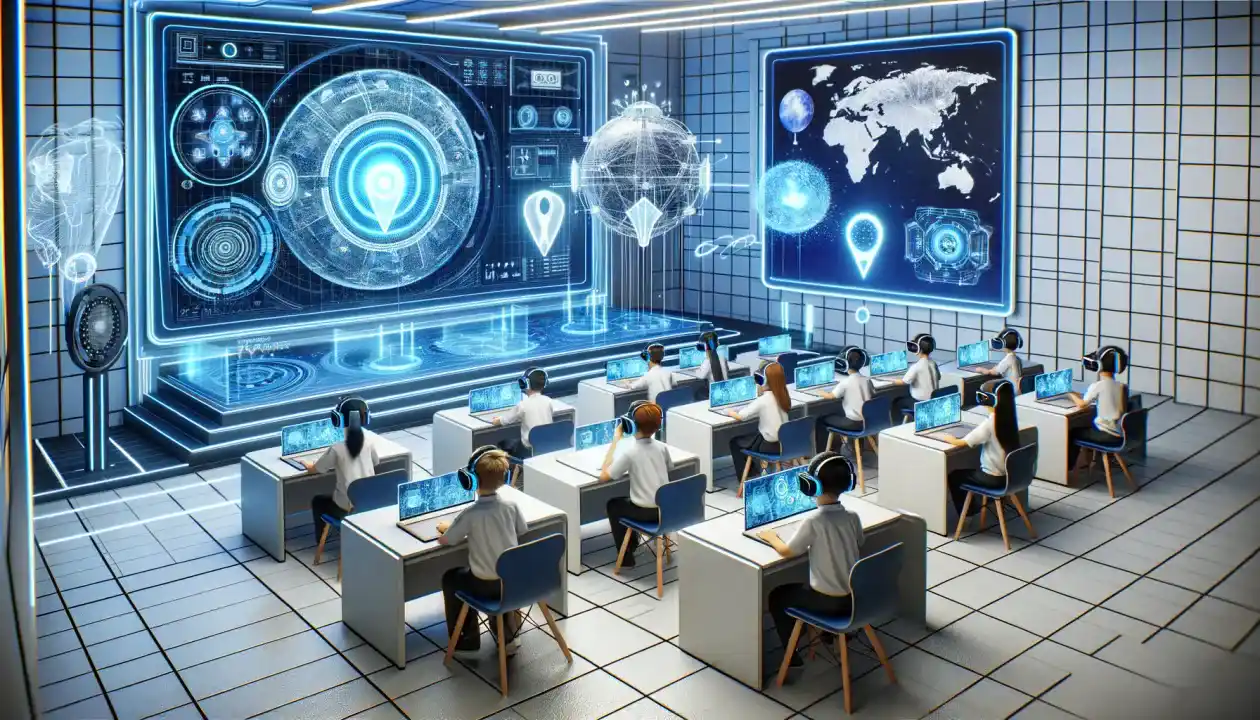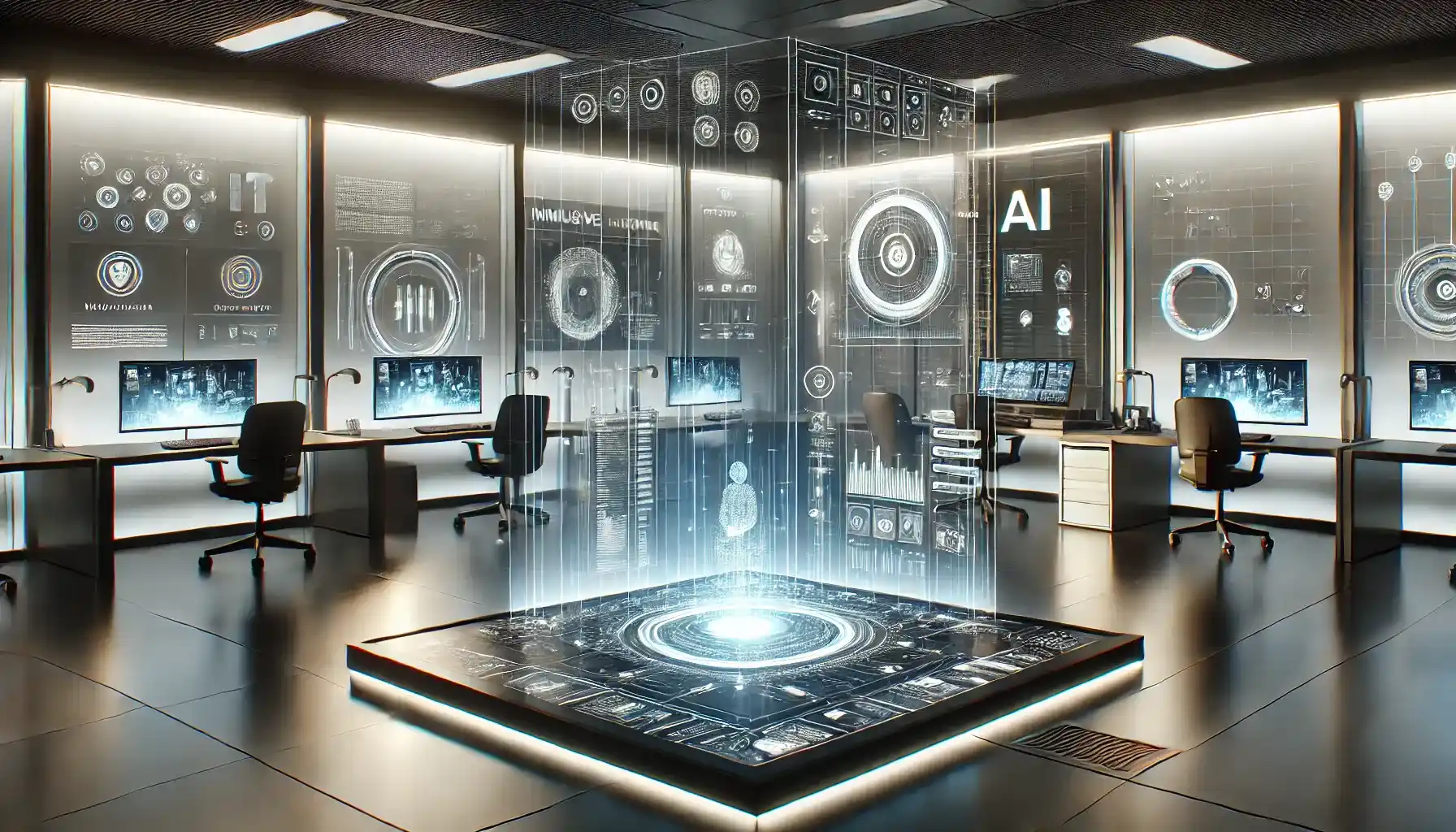Table of Contents
With the fast-paced, highly advanced world of Information Technology(IT), there is a need for continuous adaptation and learning. Traditional ways of training are hard to keep individuals updated and learning amongst interactive and practical implementations who want to grow up and work in real-world situations. Synthetic media is a breakthrough or revolutionary technology taking over the IT training service sector by incorporating virtual simulation.
Any organisation can deliver an experience with some efficacy through synthetic media while offering immersive, personalised, and scalable training programs that bridge the gap between knowledge and practical experience.
Immersive Learning Environments
This is another key case in synthetic media. Synthetic media will eventually create completely immersive virtual simulations. Such virtualities, while they replicate real-world IT systems and scenarios, also allow for participatory practical exercises without the risks present in real systems. For instance, users engage themselves in setting up servers, network management, correcting technical issues in a safe environment or experimenting in any actuality.
- Live engagements: Real-time Simulation will allow the trainees to sense how virtual system interaction can be real, enabling them to get instant feedback and contribute to the learning experience.
- Safe Experimentation: This also addresses the part of safe hands-on experience. Thus, individuals can try out workflow configurations, implement applications, or recover from hypothetical emergencies without any fear of doing real-world damage in the course of learning.

Personalised Training Experiences
The highly nuanced learning paths have a kind of blended learning style, relying both on virtual and real-world conditions-resistant, so as to respond better to specific personal learning styles and needs. Advanced techniques of AI can assess the performance of each participant and readjust, based on changes in how that participant in particular improves or deteriorates. This degree of tailored treatments will, by all means, stand by its promises because it claims to give a unique and effective learning experience to every single participant.
- Adaptive Learning Paths: Virtual simulations powered by synthetic media can modify difficulty levels and introduce new challenges based on the trainee’s progress.
- Interactive Virtual Trainer: This is an avatar based on AI technology that can give personal coaching to trainees on how to negotiate complex situations and provide tips and real-time responses.
Cyber security Simulations
Provided that cyber-security becomes a prevalent part of IT, synthetic media holds crucially important for preparing security professionals as well. It has opened up the opportunity to create virtual simulations, and realistically places trainees in scenes of cyber-breaches to evince their skill in finding vulnerabilities, mitigating risks, and responding to trespasses.
- Hands-On Defense Mechanisms: Trainees can put into practice what is essential in a firewall, encryption or intrusion detection system by letting them manipulate varying security protocols.
Cost-Effective and Scalable Solutions
Synthetic media-augmented training is also highly resource-efficient, in addition to its effectiveness. Regular IT training includes high-end infrastructure, IT equipment, and other resources that drive additional costs. Into the barrier created by traditional training methods, synthetic media also demolishes the need for physical location and resources, further allowing trainees to train in a virtual setting that is available at their convenience and at any location.
- Reduced Costs: Businesses are able to cut on costs associated with infrastructure, travel and hardware in the use of virtual simulations.
- Global Reach: Companies are capable of providing the same training programs to teams operating from different locations and time zones with the help of synthetic media.
Enhancing Collaboration and Soft Skills
Besides the technical abilities, IT specialists are usually required to possess good communication and interpersonal skills. Media training enhances the soft skills of trainees by allowing them to participate in team-based virtual simulations that require problem-solving and configuration of complex systems.
- Team-Based Scenarios: A virtual environment provides the possibilities for trainees to work together on projects that encourage teamwork and coordination.
- Leadership Development: Using simulations, participants are given various leadership roles and through careful mentoring can develop strong decision-making and management skills.
AI-Driven Feedback and Assessment
Synthetic media integrates with AI to offer insightful feedback and evaluations which allow learners to pinpoint their weaknesses. Real-time performance tracking with automated evaluations yields targeted responses that aid learners in stepping up their game.
- Performance Analytics: AI tools analyse a trainee’s actions within simulations, offering personalised feedback and recommendations.
- Continuous Improvement: Regular assessments help trainees to keep track of their progress and to keep working on such aspects where they need extra practice.

Preparing for Future Technologies
As the IT industry continues to evolve, synthetic media provides versatile avenues for training its professionals in emerging technologies such as AI, machine learning, blockchain, and cloud computing. Virtual simulations can represent state-of-the-art systems and environments so that trainees can learn skills aimed directly at the future of IT.
- Next-Gen Technology Training: Synthetic media gives the trainees a platform to explore contemporary tools and platforms for tomorrow’s problems.
- Remote work: Virtual simulations will help workers adjust to remote collaboration tools and workflows that have risen in importance among other components of the IT ecosystem.
Conclusion
Synthetic media are the game changers for IT training, making it more engaging, practical, and accessible. Through immersive virtual simulations, personalised learning experiences, and intelligent feedback systems, synthetic media assure easy and practical transition from knowledge acquisition to knowledge application.
Organisations adopting this advanced technology enhance their workforce to meet today’s challenges and allow them to thrive within the fast-changing world of IT.
By incorporating synthetic media into training, organisations equip their teams to confidently tackle contemporary challenges and future innovations.
FAQs
How will virtual reality be used in the future?
Virtual reality (VR) will be applied in the future in immersive experiences such as advanced training, education, entertainment, remote collaboration, and even healthcare. It would enable people to interact with realistic digital worlds, making learning, work, and gaming fun and interactive.
What is synthetic media technology?
Synthetic media technology is a content-creating technology enabled by the use of AI with the potential for videos, images, audio, and text alteration. It enables realistic simulated environments, avatar generation, etc., allowing for unique, immersive digital experiences to be rendered.
What is the use of virtual reality in training?
VR is used in training so that lifelike situations can be created for people to practice skills without threats that may occur in the real world. For IT professionals, this means learning how to fix servers; for medical students, there is a wide range of surgical practices-all occurring in a controlled, safe, and interacting environment.
Why is virtual reality important in modern technology?
VR is important in that it lets people experience things and learn in ways not possible with traditional methods. It makes even complex tasks more understandable, boosts user engagement, and propels innovation in education, work, and recreation.